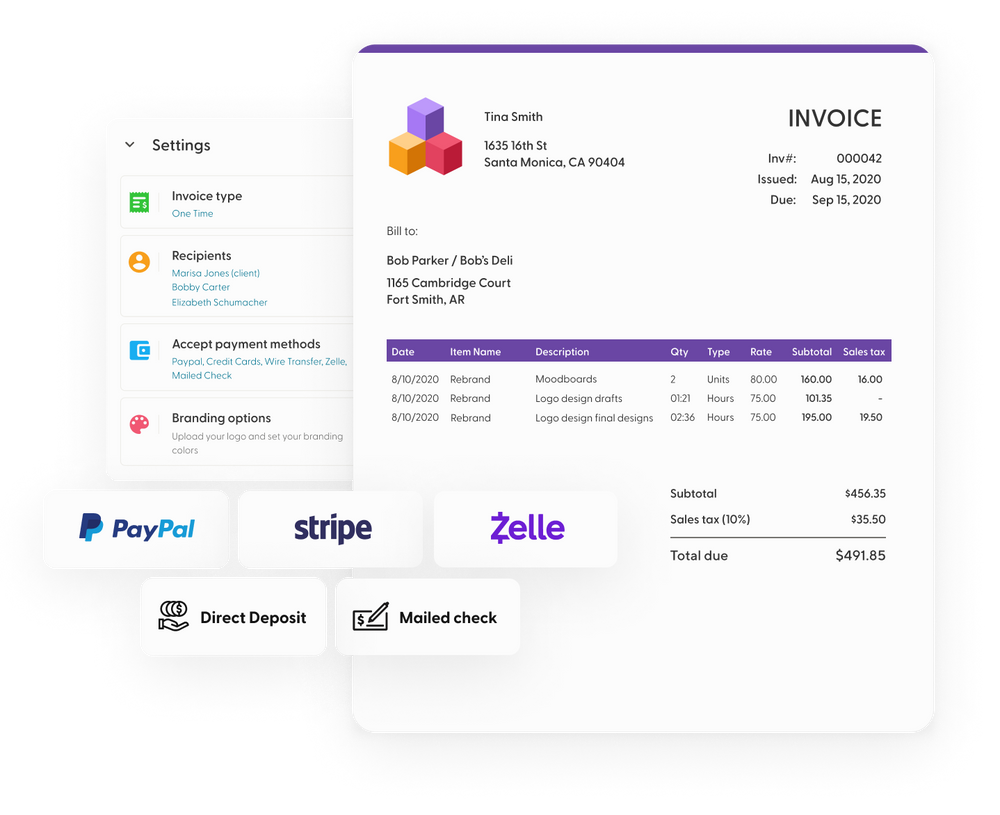Starting from the 2020 tax year, the IRS reintroduced the 1099-NEC form for businesses to use when reporting non-employee compensation.
As a freelancer or independent contractor, this is the form you are likely to encounter a lot during the tax season, so it is essential to make sure you know what it is all about. Businesses and clients that deal with 1099 employees a lot also need to know when to prepare the form and how to file it.
This article explains everything you need to know about the form 1099-NEC, whether you are an independent contractor or small business owner that works with 1099 employees.
Why IRS Reintroduced the 1099-NEC
Before 2020, businesses used the 1099-MISC to report payments made to non-employees within the tax year. However, the IRS changed his by reintroducing form 1099-NEC.
The reintroduction of the form is meant to help clarify the filing deadlines for the different 1099s. When using the 1099-MISC, you have to abide by different deadlines depending on the specific payment you are reporting, which is often confusing for both businesses and freelancers. With the 1099-NEC, there is only one filing deadline for reporting all qualified payments made in the tax year.
The 1099-NEC is also meant to make it easier to report non-employee compensation without leaving out anything that does not qualify for inclusion in form 1099-MISC.
When Should a 1099-NEC Form be Issued?
The 1099-NEC was reintroduced from the 2020 tax year to replace box 7 on the 1099-MISC form, and it is the primary form used to report non-employee compensation.
The form will be sent to workers that are not on the company's payroll. They include independent contractors, freelancers, and other third-party individuals that the company will engage for services within the tax year.
That said, there are some specific instances where the 1099-NEC form should be issued for use when filing federal income tax. These instances include the following:
Non-employee compensation of $600 or more
The IRS requires you to send a 1099-NEC for business or personal payments over $600 made to 1099 employees. However, this only includes payments for non-physical products and services.
Therefore, businesses will not have to send the form if they pay for goods they could buy in stores, even if they buy them from a 1099 employee.
While the form is not necessary for payments under $600, the 1099 employees still have to report payments for all services they provide within the tax year when filing taxes. Also, if the payments are over $400, they will be subject to self-employment tax.

Doing business with sole proprietors and LLC
When you do any business with sole proprietors or a limited liability company, you have to send them a 1099-NEC to record payments as this is considered their self-employment income.
While it is not always easy to determine the business structure, especially when working remotely or virtually, you can request the independent contractors to fill out a W-9 form. The form also provides other essential details like their address and taxpayer identification number that are crucial when preparing the 1099-NEC.
Services delivered for business purpose
The 1099-NEC will also be necessary for reporting cash payments for services delivered for business purposes. For example, if you hire an independent contractor to repair your office or maintain your business equipment like computers, you should send a 1099-NEC to report this payment.
However, if the services performed are not directly related to your business, the payment you make does not qualify for a 1099-NEC form.
Dealing with certain corporations
Generally, you do not have to send a 1099-NEC form when dealing with corporations. However, the IRS has exemptions for certain corporations. For example, when you pay attorney fees, health care payments, and cash payments for fish, a 1099-NEC will be necessary.
Withheld federal income tax
You must file a 1099-NEC form for self-employed individuals and independent contractors from whom you withhold federal income tax using the backup withholding rules. The document must be prepared even if the withheld tax amount is under $600 as long as you follow backup withholding rules.
Other payments to non-employees
Non-employees also have other payments that must be reported on a 1099-NEC.
- One such payment is fees paid from one professional to the other, such as fee-splitting.
- Businesses should also report payment for parts or materials required for service delivered by a non-employee. These payments only qualify if they are incidental to the delivery of the service.
- Other payments to non-employees, such as sales commissions, also have to be reported on a 1099-NEC form.
Note: This tax form does not record other earnings like tax-exempt interest and dividend income as there are other 1099s for these earnings. If you have other kinds of non-employee compensations but are not sure whether to report them in a 1099-NEC, it is a good idea to seek tax advice from a tax professional before the tax due date.
Where Can You Get a 1099-NEC
There are several places to get 1099-NEC whether you plan to fill out the paper forms or want to file electronically. Here's A list of where to get this essential IRS form.
Directly from the IRS website as they provide links for downloading the forms for every tax year
- Collect it physically from your state tax department, as most will provide them alongside other state tax forms
- From a tax preparation software, if you use one when filing electronically
- Download from your business accounting program
- From a tax professional that helps with tax preparation
Note: The IRS form 1099-NEC Copy A is printed in special red ink that needs to be scannable. Therefore, you need to be careful where you download the forms, as you might not use them to report non-employee compensation without this feature.
Overview of the Different Fields on a Form 1099-NEC
The 1099-NEC has several fields and boxes that you will need to fill out when preparing to send the forms to self-employed individuals and reporting federal income tax to the IRS.
The first field to fill out will capture the basics for the payer and recipient, and it includes essential information such as their name, tax identification number, and addresses.
Overall there are 5 main sections on a 1099-NEC form:
- Payer information section
- Recipient information section
- Non-employee compensation paid section
- Federal income tax withheld
- State income tax information
Here is an overview of where you should fill out all this information.
1. Box 1: Total non-employee compensation paid
Box 1 reports the total amount paid in non-employee compensation for the tax year. You have to include everything provided the total compensation is over $600.

2. Box 2 and 3: Reserved boxes
These two boxes are reserved, and you should not complete them when you are only filing non-employee compensation.
However, you should check box 2 when you make direct sales totaling over $5,000 for the purposes of reselling. You will not need to fill out the total value of the transaction as the Internal Revenue Service requires you to include it in the Schedule C form when filing your small business tax return.
3. Box 4: Federal income tax withheld
Federal income tax withheld with backup withholding notice is reported in box 4. Backup withholding occurs when the recipient does not provide their tax identification number. It is common when paying fees for professional services such as attorneys, architects, and independent contractors.
4. Box 5 and 6: State income tax information
Box 5 reports state tax information such as state withheld taxes for non-employee compensation. Box 6 includes a payer's state identification number for a specific state.
5. Box 7: State payment amount
The total state non-employee compensation payments for the tax year are reported on box 7 to help make it easy for 1099 employees or independent contractors to file their state income tax returns.
Filing the 1099-NEC
Businesses have to send a copy of the 1099-NEC to the independent contractors and file another with the Internal Revenue Service by January 31.
The filing process depends on whether you are doing it manually or electronically. The electronic filing procedures can also vary a little when using tax software or directly on the IRS website. Here is an overview of the overall steps you need to follow:
- Create a free account on the IRS Filing Information Returns (FIRE) system
- Log in to your new account
- Navigate the dashboard to locate the form 1099-NEC
- Fill out the form with all the necessary information
- Check that all the information is correct and submit the form to the IRS before the due date
Note: Businesses that want to file more than 250 1099-NEC forms cannot send them to the IRS by mail, so electronic filing is the only option.
Deadline for Filing Form 1099-NEC
The due date for filing the 1099-NEC with the IRS and sending a copy to the 1099 employee is January 31. The deadline does not change whether you file electronically or send the physical form by mail.
Additionally, the recipient must file the reportable payments on the form by January 31. For other 1099 forms, the deadline is March 1 when filing by mail and March 31 for electronic filing for the 2021 tax year.
If the January 31 deadline falls on a weekend or public holiday, the Internal Revenue Service will extend it to the next business day. Also, if you think that you will not be able to file the forms on time, you can contact the IRS and ask for a deadline extension to avoid hefty penalties.
What Happens if you Miss the Deadline?
The Internal Revenue Service will penalize you if you miss the filing deadline without requesting an extension. The penalty is $60 for every form you file outside the deadline but within 30 days and $120 for each late form that you file after 30 days but before August 1.
Businesses that ignore filing the forms and sending them to the 1099 employees will get a fine of at least $310 for each document, and the maximum penalty per tax year is $1,261,000 for small businesses.
Final Remarks
The 1099-NEC is the main form for reporting self-employment income, and any business that pays a lot of non-employee compensation will have to deal with several of these forms every tax season.
These forms are pretty straightforward to fill out and file provided you have important information such as the recipient's tax information and total amount paid in non-employee compensation.
The Internal Revenue Service also makes filing easy via their electronic system and mail, so you only need to make sure you file the crucial tax returns before the filing deadline.




